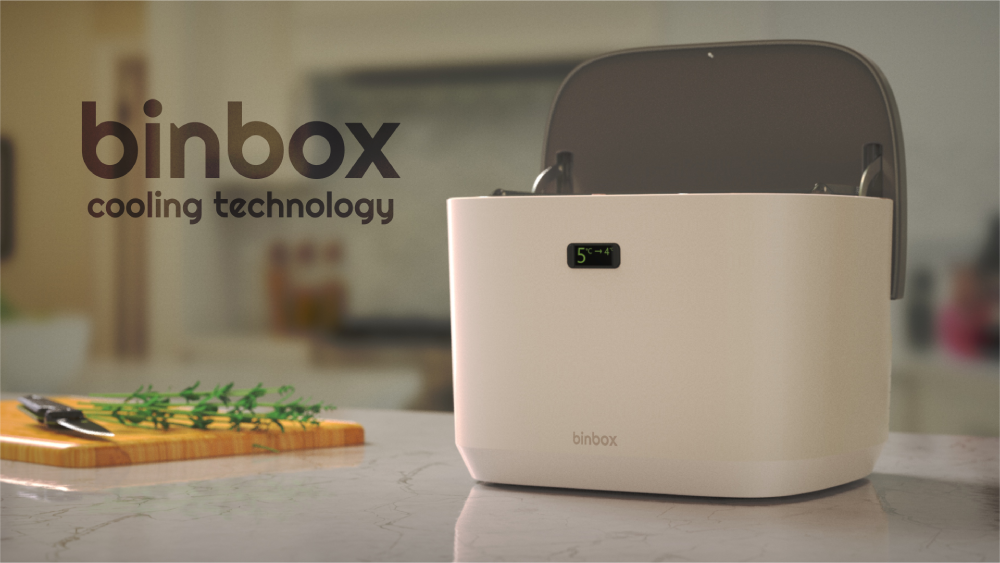Binbox
Every year in the UK, 9.5 million tonnes of food waste is thrown away; 70% of this comes from household food waste. Any food waste that is not recycled will be sent to landfill where it rots and releases methane: a harmful greenhouse gas.
To combat this, due to the 2021 Environment Act, from 2023 all local authorities in the UK will be required to introduce separate bin collections for household food waste. This will see an increase in the number of households disposing food waste separately to general waste, resulting in a surge in the market for food waste related products.
However, there are many people who choose not to recycle their food waste. The main deterrents are the mess and smell the food waste creates in the kitchen, and the hassle of dealing with it. Therefore, the aim of this project is to design a product that solves these problems, encouraging more people to recycle their food waste.
“Binbox” is a food waste storage container with an inbuilt cooling system. Cooling the food waste will slow the decomposition process of the waste, therefore reducing the smell and mess produced by the waste. It also allows the food waste to be stored in the kitchen for longer before needing to be emptied into the outdoor food waste bin, therefore reducing the hassle of dealing with the waste.

“Binbox” uses a Peltier cooling system with two fans to direct the cooled air into the product’s cooling chamber, which surrounds an aluminium container in which the food waste is housed. The cooling system would be powered by the mains, using a standard 3A plug and a USB-C cable. “Binbox” minimises its energy usage through a thermocouple which reads the internal temperature of the product and uses as little power as possible to maintain target temperature. The product is also fully insulated with polyurethane foam to prevent the cold air from escaping.
The aluminium container which contains the food waste features a handle for easy portability, making it simple for the user to transport the food waste outside and empty it into the council-provided food waste bin. “Binbox” is compatible with standard-sized compostable bin-liners which many users would use to further reduce the mess created inside the product.
“Binbox” features a simple press-to-open lid and has sprung hinges which allow the lid to fully open by itself. When open, the lid sits behind the product so that “Binbox” is not too tall when open; this allows the product to be placed on the countertop underneath fitted kitchen cabinets.
In summary, “Binbox” presents an improved solution to home food waste management that will encourage more people to recycle their food waste.
Design work